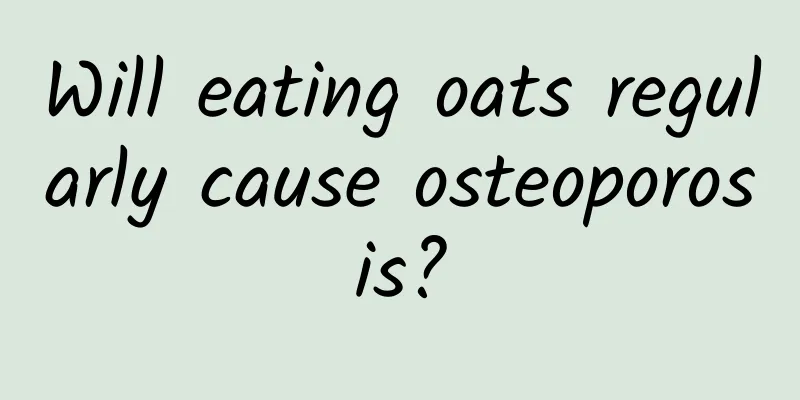What should I do if I have amenorrhea after curettage?

|
Curettage is a very common surgery in our lives. There are many things that women need to pay attention to during curettage. Many people don’t quite understand this. Today I will explain to you some knowledge about curettage. Let’s take a look! Amenorrhea after curettage and curettage. This disease has a clear history of curettage. 60-90% of patients experience oligomenorrhea or amenorrhea after surgery, and about 70% of patients experience cyclical abdominal pain. The abdominal pain is stabbing and colic, and there may be a feeling of anal prolapse. The tongue is purple and the pulse is stringy. The syndrome differentiation is "pain due to obstruction", stagnation of Chong and Ren meridians, obstruction of uterine vessels, and menstrual flow. If the disease lasts for a long time, it may turn from excess to deficiency, leading to a mixed syndrome of deficiency and excess with Chong and Ren meridians deficient and stasis in the uterus. Surgical damage to the Chong and Ren meridians of the uterus is one of the characteristics of this disease that distinguishes it from other diseases. The Chong and Ren meridians of the uterus belong to the kidneys and also to the Yangming spleen and stomach. If the Chong and Ren meridians of the uterus are not restored, the congenital kidneys and the acquired spleen and stomach will inevitably be affected. The treatment principles for amenorrhea after curettage are as follows: in the early stage, the emphasis is on regulating qi and activating blood circulation to unblock menstruation; in the middle and late stages, equal emphasis is placed on replenishing yin essence and activating blood circulation to remove blood stasis. Based on clinical practice, we divide this type of amenorrhea into two types. One is the uterine blood stasis type, with symptoms of severe periodic abdominal pain, stabbing and colic, very little menstrual flow or amenorrhea, dark purple tongue, stringy pulse, uterine tenderness during gynecological examination, and about half of the women have cervical shaking pain and tenderness in the adnexa. The other is the kidney deficiency and blood stasis type, with symptoms of scanty menstruation gradually turning to amenorrhea after abortion, periodic abdominal pain, low back pain, tinnitus, tortuous sublingual veins, thin and stringy pulse, and gynecological probe examination can reveal a narrow uterine cavity that is difficult to penetrate or cannot reach the uterine fundus. Reproductive hormone measurements indicate varying degrees of pituitary-ovarian dysfunction, which is a secondary disorder of long-term amenorrhea. Amenorrhea after curettage and abortion in terms of medication. For the type of uterine blood stasis, we use the method of promoting blood circulation and removing blood stasis, softening and dispersing nodules. The medicines are: 15 grams each of Angelica sinensis, Gleditsia sinensis thorns, seaweed, and kelp, 1.2 grams each of Chuanxiong, red peony root, and safflower, 30 grams each of Millettia reticulata and Salvia miltiorrhiza, 10 grams each of Trillium, Curcuma zedoaria, Scolopendra subspinipes, and cooked rhubarb, and 6 grams of Sanguisorba officinalis. Experiments show that this prescription has a significant antagonistic effect on the endometrial adhesion model created by intrauterine injection of phenol colloid in rats, and can achieve the dual purpose of significantly preventing and treating the disease. For the type of kidney deficiency and blood stasis, we use the method of tonifying the kidney and removing blood stasis, softening hard masses and unblocking the meridians. The medicines are: 12 grams each of Epimedium, Curculigo, Deer Horn, and Cornus officinalis, 30 grams each of calcined purple quartz, Salvia miltiorrhiza, and Millettia reticulata, 10 grams of pangolin slices, 15 grams each of safflower, kelp, and raw hawthorn. The above prescriptions all have a treatment course of 2 months. For a small number of severe intrauterine adhesions, a probe can be used to remove simple endometrial adhesions, and a small dilator (No. 4.5-6) can be used to separate cervical adhesions. Combined with Chinese medicine treatment, it is more effective in preventing re-adhesion. Through the above sharing, everyone has a certain understanding of the precautions for curettage. Then we should pay more attention to this knowledge in daily life and do a good job of personal health care, which is good for our own health! |
<<: How is the safe period calculated?
>>: Prevention of occult breast cancer
Recommend
Does it hurt when women have an IUD inserted?
I believe that many mothers who have just given b...
What is garbage classification? Garbage classification table
The large amount of garbage we generate in produc...
How long does it take for breast milk to stop once you are pregnant?
Breast milk is the safest, most natural and most ...
How to remove the cured caulking agent? How to clean the caulking agent on your hands?
Many people are not satisfied with the tile adhes...
What is the cause of excessive vaginal water?
The temperature is relatively hot, and everyone f...
How to reverse the dilemma of ovarian dysfunction in assisted reproduction?
Author: Lv Yan, First Affiliated Hospital of Nava...
Symptoms of premenopause in a 51-year-old woman
Menopause is the end of a woman's menstrual p...
Blood pressure keeps getting higher and higher, what's wrong? How can people with high blood pressure spend the winter safely?
Huazi's father was hospitalized because he fe...
Beware! If you are infected with dengue virus, taking ibuprofen will make the condition worse
recently Guangdong has 1,785 new dengue cases in ...
35 days gestational sac size picture
The gestational sac is the initial form of pregna...
Transparent blisters on pregnant women's hands
Pregnant women should be very careful with the us...
Dreamgrow: Google+ traffic drops sharply, down 37% overall
Google+ accounted for the largest share of Google...
Diet and nutrition after postoperative enterostomy: how to regulate scientifically
Diet and nutrition management for patients with p...
What is the difference between sand beetles and flower beetles? How to remove sand beetles
Flower clams are also called clams. In Hainan, Ch...









